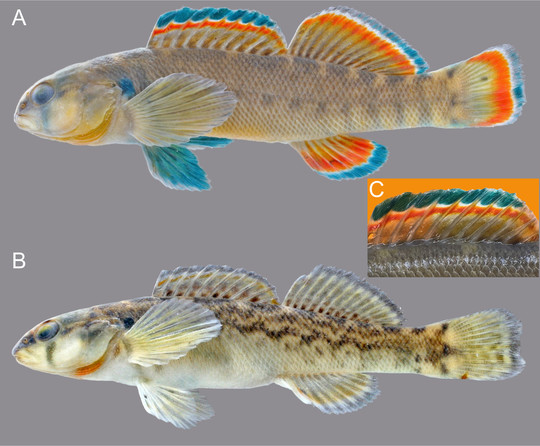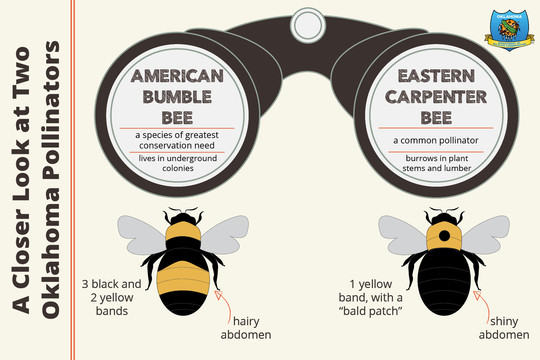 Female black-legged tick (James Gathany/Centers for Disease Control and Prevention)
An Introduction to Ticks
When Jess Farquhar's family moved from Arizona to Oklahoma, ticks were one of her bigger concerns. A decade later, Farquhar had overcome her apprehensions and was a graduate researcher with Oklahoma State University studying the ticks that parasitized black bears.
"Once I started researching ticks I developed a respect for them," Farquhar said. "They're not my favorite, and I certainly don't want a tick bite, but they're fascinating animals."
Get tick basics and tips for identifying and avoiding Oklahoma's ticks
 Blue River orangebelly darter male (A, C) and female (B). (Nick Lang)
New Oklahoma Fish Species Recognized
The subspecies of orangebelly darter found in Oklahoma's Blue River drainage was recently elevated to a full species by the University of Oklahoma's William Matthews and University of New Mexico's Thomas Turner.
The newly described Blue River orangebelly darter can be distinguished from other orangebelly darters by mitochondrial DNA, scale counts, subtle differences in coloration, and dimensions of the head. Even so, both darters are relatively small and colorful fish that prefer rocky riffles and rapids. During the spawning season, males develop bright orange and blue fins.
This species has only been documented in the Blue River drainage of southcentral Oklahoma. It appears to be most common in spring-fed and rocky portions of the upper drainages, as well as in some small tributaries of the river.
Read the Copeia journal article that redescribed and recognized the darter as a full species

Gardening for Butterflies
Planting butterfly gardens – even planting pots on an urban balcony or patio – can offer the host and nectar plants butterflies need to survive. The Xerces Society’s Ray Moranz shares ways gardeners can make a difference for our butterflies and other pollinators in this hour-long webinar. Moranz reveals important host and nectar plants, along with resources for learning more about gardening for butterflies.
Celebrate Pollinator Week with this great pollinator talk

Share Bee Sightings with iNaturalist
Bees and other pollinators provide important ecosystem services by helping pollinate plants, ensuring important food sources used by many other wildlife species are available the next year. You can help the Wildlife Department and other conservation groups better understand these pollinators by reporting sightings on iNaturalist, the free online crowdsourcing platform.
Share photos along with the dates and locations of your pollinator sightings
|